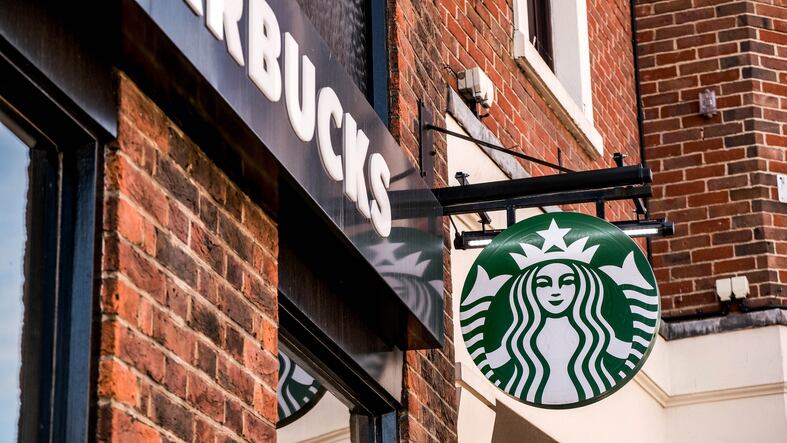For decades, Starbucks has been so much more than a coffee retailer. The Seattle-based chain transformed the everyday cup of Joe into an international lifestyle symbol; ensconced in these clean and cozy stores, consumers across the globe learnt to love and formed ritualistic habits around espresso-based drinks.
Why, then, does a new report suggest a dramatic decline in Starbucks’ brand value?
Starbuck’s value down
Brand Finance found that McDonald’s has become the world’s most valuable restaurant brand, overtaking incumbent Starbucks which dropped by 36% in 2025 to USD 38.8 billion.
The consultancy’s managing director Laurence Newell told us: “Starbucks remains one of the world’s most valuable brands … ranking 45th in Brand Finance Global 500 2025, down from its peak position among the top 15 in 2024.” The consultancy attributes this drop to “declines in key brand strength metrics in the US and China, including ‘reputation’ and ‘recommendation’.”
What’s going wrong with the world’s most recognizable coffee brand? Is what Starbucks once pioneered now ubiquitous, with independent cafés and other international chains catching up? Are younger generations evading the Green Siren Call? Morningstar consumer equity analyst Dan Su gave this writer the lay of the land: “Recent strategic misfires have left the firm wandering in the wilderness, with global comparable store sales falling 2% in fiscal 2024 on the back of consumer price sensitivity, macroeconomic weakness and deteriorating value perception.”
However, Su underlines that the coffee brand continues to play in a global category of one, with the firm’s $36 billion in 2024 revenue outpacing its closest global competitor, Inspire Brands’ Dunkin’, by a factor of three globally, and by a factor of two in the US.
Brand Finance’s Newell notes that younger consumers are increasingly mindful of how and where they spend their money. “Many feel a growing responsibility to support smaller, independent businesses, rather than major corporate giants,” he said.
With a reputation for revitalizing brands in the sector, Starbucks’ new CEO Brian Niccol, who joined the business in September 2024, has made a series of moves to turn things around, looking at the cafes’ vibe and using technology to speed up service times.
As Niccol noted in Starbucks’ Q2 2025 earnings call on 29 April, “We’ve moved quickly … to make small but impactful improvements to the coffee house experience. We’re creating moments of connection with handwritten notes on cups and we’re making it more enticing to stay in our cafes with ceramic mugs and expanded free refill policy and the return of great seats.”
Is that enough to drive a turnaround? Analyst Su thinks so.
“We expect extensive investments in partner hours, menu simplification and the customer restaurant experience should defend Starbucks’ brand prowess and drive a traffic turnaround in the midterm.”
This is despite the rising cost of coffee itself and the ongoing tariff trade war. Climate change, supply chain disruptions and geopolitical instability in key coffee-growing regions have pushed up arabica bean prices.
But Starbucks’ CFO & EVP Catherine R. Smith noted in the same earnings call that coffee only makes up about 10-15% of Starbucks’ product and distribution costs (roughly 3-5% of sales) and their arabica is sourced from 28 countries.
One of their largest areas of tariff exposure is China-sourced merchandise; the company says they are actively working on strengthening their supply chain. Starbucks management has made it clear that it does not intend to use price increases to offset the cost pressure in 2025.
On the subject of China, where Starbucks is soon to launch ‘True Taste Sugar-Free’ beverages and new price points on select products, markets diverge dramatically in terms of Brand Finance’s ‘Brand Strength Index (BSI)’. Newell confirms that some of Starbucks ‘strongest markets are in Asia.
“According to our research, Starbucks notes its strongest performances in South Korea, Japan and Singapore. China is another strong market for the brand, where Starbucks maintains a dominant position despite growing competition from local rivals like Luckin Coffee.”
Starbucks boasts a BSI score of 86.8 out of 100 in China compared to 73.0 out of 100 globally in Brand Finance’s reckoning. Compare this to Mexico, France and Germany where the brand recorded the lowest BSI scores among all markets, with Mexico bottoming out at 62.4.
It is clear that Starbucks’ decline in brand value is very far from a death knell. It is, though, a signal that the company has some way to travel to get people ‘Back to Starbucks’ – a strategy mentioned 23 times in its most recent earnings call – in traditional markets at least.

